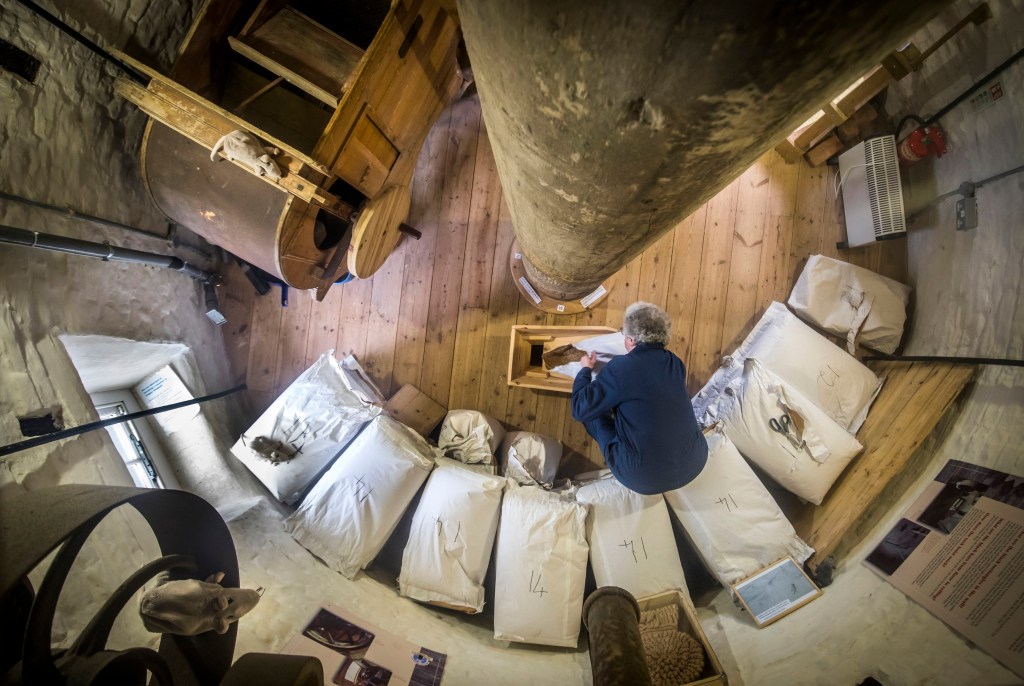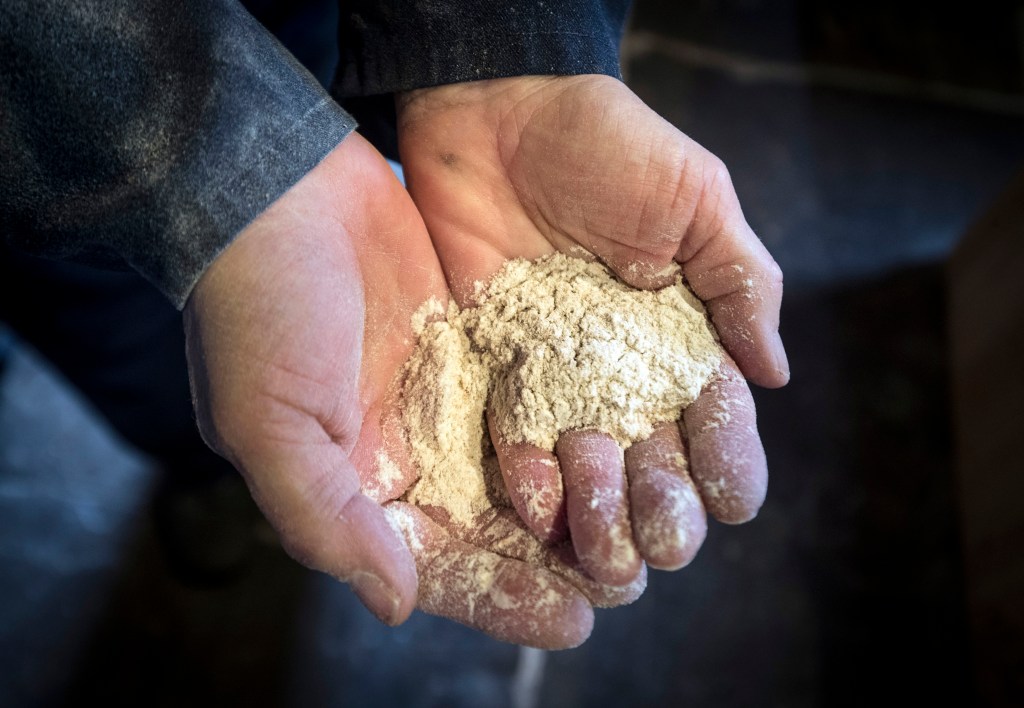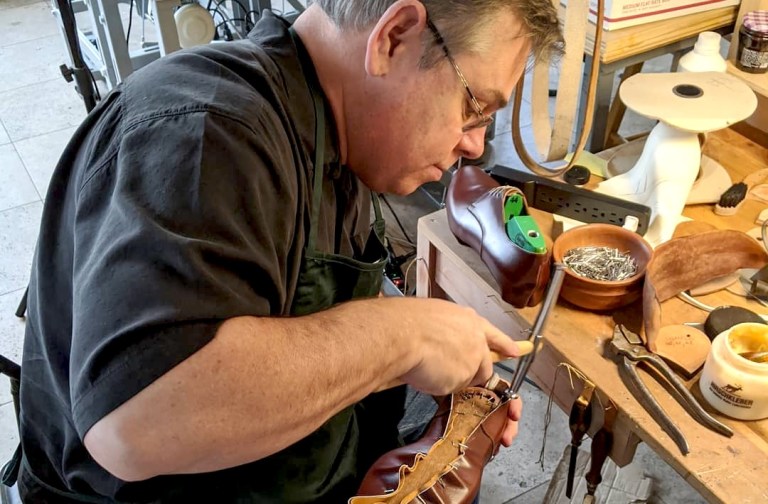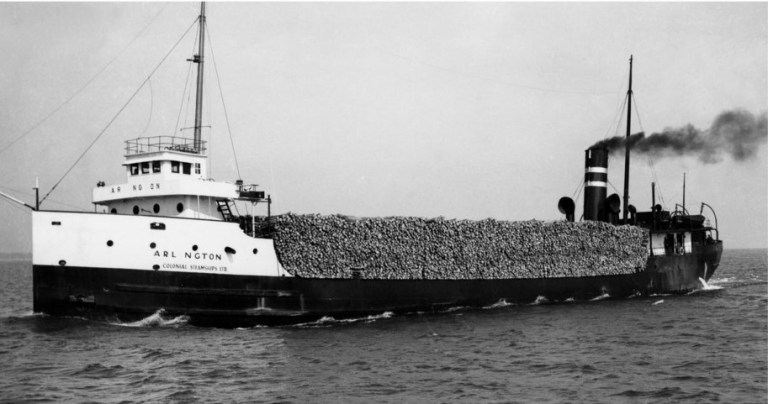Plenty of hip bakeries these days are leaning into heritage wheat flours and other ancient grain varieties, but it’d be hard to top the historic value of the flour being milled at the Holgate Windmill. Nestled in a suburb of York, England, the brick tower mill is the oldest working windmill of its kind in the country, still grinding grain as it did 255 years ago.
Since it was built in 1770, the surrounding area has changed quite a bit — there’s now a roundabout, housing development, and cars. Yet the historic structure remains much as it ever was, thanks to a preservation society of about 40 volunteers who worked for 10 years to restore the mill starting in 2001, as well as revive the rare (and meticulous) craft of producing flour by windmill.
“It is an important building. Of all of the hundreds of windmills which were once found around Yorkshire, this is the only working one left,” Steve Potts, a trustee of the group and its head miller, told SWNS, adding, “We think it is important to keep the industry of milling going.”

You can take a tour of the milling process (complete with videos) on Holgate’s website — but essentially, power generated from the windmill’s sails is driven down to milling stones weighing around a ton each. Once the grain is ground into flour, the latter is collected via a round wooden tun and taken down a chute to the windmill’s lowest level to be weighed and bagged.
Before it was adopted by the Holgate Windmill Preservation Society more than two decades ago, the windmill was left empty and decrepit for 68 years. But prior to its abandonment, it was active from the time it was built until 1933. George Waud, its original owner, bought the land on which it was constructed in 1768 — and three generations of his family operated it until 1851, when it was sold to a local named John Musham.
The structure passed through the hands of several owners and operators over the following decades, most notably Joseph Peart’s, who purchased it in 1855. Along with elevating the tower by nearly 9 feet, Peart invested in a steam engine, chimney, and cast-iron machinery still present today.
In 1939, six years after the windmill stopped production, its then-owner sold it to the City of York Council, known back then as the York Corporation, and it fell into disrepair while housing was built around it. At the time, smaller windmills like Holgate were being surpassed due to the rising popularity of larger and more advanced roller mills.

These days, following the over $669,000 restoration, flour is typically milled at Holgate twice a week. As of 2023, its grain and spelt are sourced from nearby counties, and the site mills up to 4.4 tons of flour annually. The windmill is still owned by the City of York Council, although the Preservation Society entirely controls operations.
“It is a dying art in many ways, and if we weren’t doing it, in a couple of years there may be no one left who knows how to,” Potts said. “Our plan is to keep its legacy going forever.”
RELATED: This List of America’s “Most Endangered Historic Places” Is Helping to Save Them












